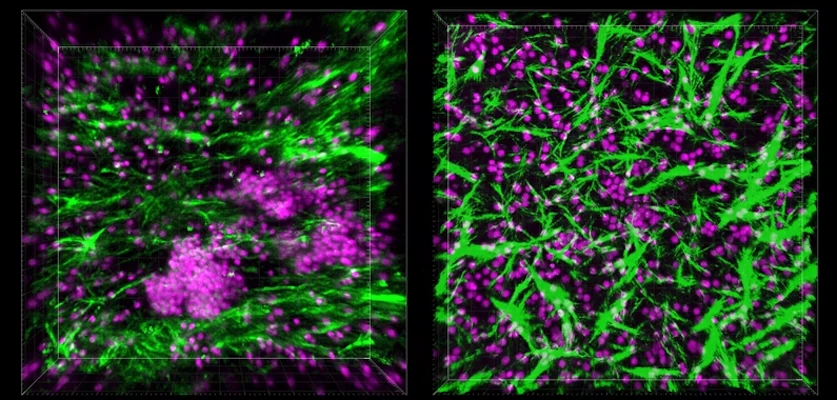The immune system is incredibly complex, but a new breakthrough could help scientists unravel more of its secrets. Researchers at Harvard’s Wyss Institute have created a more accurate model of the human immune system in a microfluidic chip, providing a better platform to study how immune cells respond to vaccines and pathogens.
Most medical and biological studies begin in cells in lab dishes or in animals, but these environments aren’t always the best analogs to how things work in live humans. As such, many drugs or treatments that seem promising in mice end up falling short of hopes when they reach human trials.
In recent years, scientists have developed a way to model organs and other body tissues in microfluidic chips, which provide a much closer comparison. These “organs-on-chips” have so far included hearts, lungs, intestines, kidneys, spleens, corneas, teeth and placentas, and now the Wyss researchers have added the immune system to the list.
The researchers cultured human B and T cells inside a microfluidic device, which is designed to mimic the physical conditions these immune cells would encounter when they reach an organ. Originally, the team was investigating what happens to those cells when they enter other tissues, but when the researchers fed a flow of nutrients in, they discovered something unexpected.
The B and T cells began to organize themselves into three-dimensional structures that resembled lymphoid follicles (LFs), masses of tissue found in lymph nodes and other tissues that mediate immune responses. Specifically, they seemed to form germinal centers, which perform complex immune reactions.

On closer examination, the team detected several biomarkers that indicated these lymphoid follicles were doing their job. The structures were secreting a chemical called CXCL13, which is produced by lymphoid follicles in response to chronic inflammation. The B cells inside the structures expressed an enzyme called activation-induced cytidine deaminase (AID), which activates B cells against certain antigens. They also found plasma cells, which mature B cells differentiate into in order to secrete antibodies.
“These findings were especially exciting because they confirmed that we had a functional model that could be used to unravel some of the complexities of the human immune system, including its responses to multiple types of pathogens,” said Pranav Prabhala, second author of the study.
Next, the researchers investigated how this immune-system-on-a-chip would respond to vaccination, to check if it was a close approximation of what happens in living humans. The team added dendritic cells, which help produce antigens by presenting fragments of pathogens to the lymph nodes.
The team vaccinated these microfluidic systems against the H5N1 flu strain, and sure enough the vaccinated LF chips produced far more plasma cells and flu antibodies than those grown in the usual flat cell cultures. Similar results were seen when the team repeated the experiment with commercially available flu vaccines. The levels of several cytokines were found to be similar to those in humans who received the vaccine.
This indicates that these microfluidic LF chips are a close match to the real thing, meaning they could be a much better analog for future research into the immune system and drug development.
“Animals have been the gold-standard research models for developing and testing new vaccines, but their immune systems differ significantly from our own and do not accurately predict how humans will respond to them,” said Girija Goyal, first author of the study. “Our LF Chip offers a way to model the complex choreography of human immune responses to infection and vaccination, and could significantly speed up the pace and quality of vaccine creation in the future.”
The research was published in the journal Advanced Science.
Source: Wyss Institute




